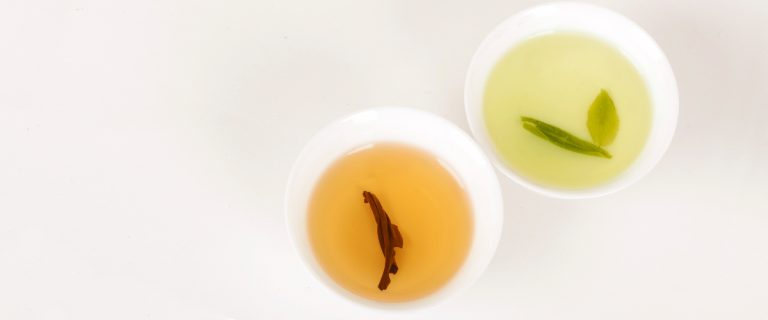Both, the oolong tea and the green tea are less oxidized than black tea. They are light, and while one is famous for its flavors, the other commands a following of health-conscious folks. This post is to showcase the similarities and the differences between oolong and green tea.
Oolong vs Green Tea: Production
Oolong translates to ‘black dragon’. It’s made by allowing tea leaves to wither and oxidize under strong sunlight. The degree of oxidation can range from 8-85% after which the tea is twisted into long, curly leaves or small beads with a tail.
Green tea is made by pan-firing or steaming tea leaves – to quicken the heating process – and then drying them. This prevents the leaves from oxidising too much and preserves the fresh flavour of the tea for a long time.
In the case of the oolong, rolling or twisting the leaves is not merely for an aesthetic purpose; tea masters can alter the taste of the final brew by rolling the tea in a particular style. The final taste of a cup of green or oolong tea is influenced by how the leaves open up during brewing and release their flavours. This effect is slightly more pronounced in the oolong, where the oxidation and the rolling combine to produce a rich bouquet of notes.
Oolong vs Green Tea: Flavours
Oolong is the most diverse of all tea types and its flavors can range from sweet and floral to dark, rich and smoky with base notes of honey and wood. This tea also lacks the astringency of the green tea and is more sublime and intense.
Green tea, as all weight watchers would know, has a more vegetal and grassy flavour with a slightly astringent and a somewhat bitter undertone. The final tasting notes depend a lot on where the tea came from, its packaging, and its brewing, but as far as taste is concerned the oolong takes this round.
Oolong vs Green Tea: Benefits
“Is oolong tea healthier than green tea?” is a question that has surely crossed your mind. Well, we’re going to help answer that. Much has already been written about the antioxidant properties of green tea and how it may even help reduce risks of cancer and other diseases. Oolong tea has lower levels of catechins and polyphenols than green tea.
Green tea has been researched and marketed so much for weight loss that it has become a de facto calorie buster, even if scientific evidence is inconclusive. In fact, experts say that drinking other varieties of tea like oolong and black tea can also curb weight by suppressing hunger pangs and reducing your daily calorie intake.
We hope this information helps you choose the right brew for you. Calories and catechins aside, tea is ultimately a comfort drink, so while you obsess over the details, remember not to lose the delight that a good cup of tea offers – whether it’s an oolong or green tea.

Comments are closed.